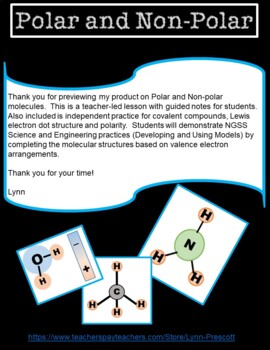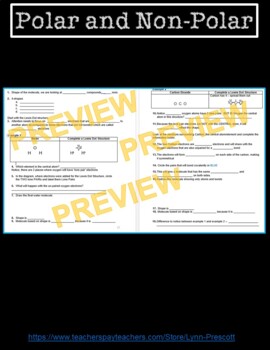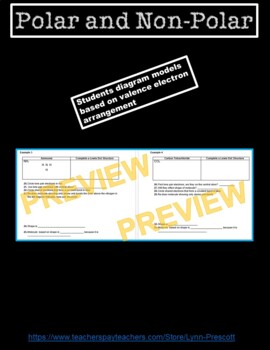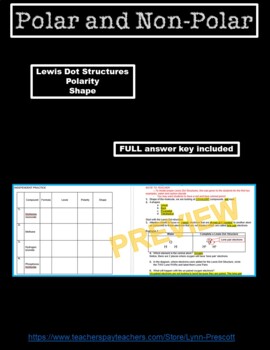Polar and Nonpolar Covalent Bonding and Properties
Lynn Prescott
72 Followers
Grade Levels
8th - 12th, Higher Education, Adult Education, Homeschool
Subjects
Resource Type
Standards
NGSSMS-ETS1-4
NGSSHS-PS1-3
Formats Included
- PDF
Pages
10 pages
Lynn Prescott
72 Followers
Description
Thank you for previewing my product on Polar and Non-polar molecules. This is a teacher-led lesson with guided notes for students. Also included is independent practice for covalent compounds, Lewis electron dot structure and polarity. Students will demonstrate NGSS Science and Engineering practices (Developing and Using Models) by completing the molecular structures based on valence electron arrangements.
Thank you for your time!
Lynn
Total Pages
10 pages
Answer Key
Included
Teaching Duration
N/A
Report this resource to TPT
Reported resources will be reviewed by our team. Report this resource to let us know if this resource violates TPT’s content guidelines.
Standards
to see state-specific standards (only available in the US).
NGSSMS-ETS1-4
Develop a model to generate data for iterative testing and modification of a proposed object, tool, or process such that an optimal design can be achieved.
NGSSHS-PS1-3
Plan and conduct an investigation to gather evidence to compare the structure of substances at the bulk scale to infer the strength of electrical forces between particles. Emphasis is on understanding the strengths of forces between particles, not on naming specific intermolecular forces (such as dipole-dipole). Examples of particles could include ions, atoms, molecules, and networked materials (such as graphite). Examples of bulk properties of substances could include the melting point and boiling point, vapor pressure, and surface tension. Assessment does not include Raoult’s law calculations of vapor pressure.





